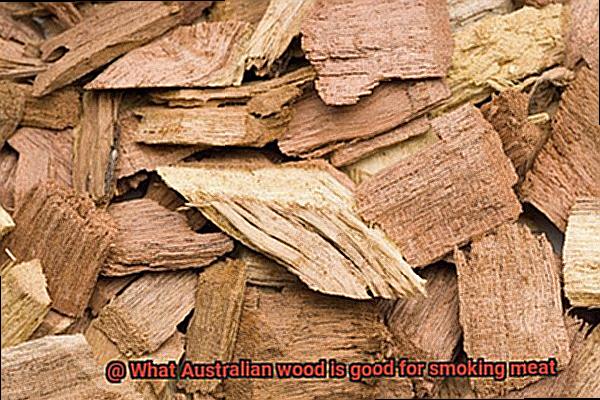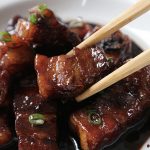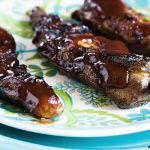Calling all meat lovers. Do you want to take your mealtime to the next level with a burst of unique and distinctive flavor? Well, look no further than smoking your meat with Australian wood. This age-old cooking technique is perfect for adding that extra oomph to your dish. But, choosing the right kind of wood is key to achieving that perfect smoky taste.
So, which Australian wood is good for smoking meat? It’s not as simple as you might think. There are many variables that can affect the overall taste of the meat. Different woods impart different flavors, and it all comes down to personal preference. That being said, there are a few popular options that we’ll explore in this blog post.
Get ready to learn about some of the best Australian woods for smoking meat, their distinct flavors, and which meats they pair well with. Plus, we’ll share some tips and tricks to ensure your smoked meat always comes out perfectly. So sit back, grab a cup of coffee, and let’s dive into the world of Australian wood and meat smoking.
Contents
What is Smoking Meat?
Smoking meat is a time-honored tradition that has been used for centuries to add flavor and preserve meats. But what exactly is smoking meat? It involves cooking meat slowly over low heat using smoke from burning wood, which adds a delicious smoky flavor and slows down bacteria growth.
To smoke meat, you’ll need a smoker, which comes in various sizes and shapes. Some use charcoal as a heat source, while others use electric elements. But the type of wood you use can greatly impact the flavor of your food. In Australia, there are several woods commonly used for smoking meat, each with their own unique flavor profiles.
Ironbark is a popular Australian wood for smoking meat, known for its strong, sweet flavor that pairs well with beef, pork, and lamb. Hickory is another favorite with a strong, smoky flavor that works well with pork and poultry. For those who prefer a milder flavor, Applewood produces a sweet and fruity smoke that pairs well with pork and poultry.
While selecting wood is important, so is choosing high-quality, dry wood that has been properly seasoned. Wet or green wood can produce bitter flavors and unpleasant smoke. It’s also important to consider how long you will be smoking your meat and adjust the amount of wood accordingly to avoid over-smoking.
There are two main methods of smoking: hot smoking and cold smoking. Hot smoking involves cooking the meat at temperatures between 225°F to 250°F, while cold smoking is done at much lower temperatures between 68°F to 86°F. Cold smoking is typically used for preserving meats like ham and bacon and is not recommended for novice smokers.
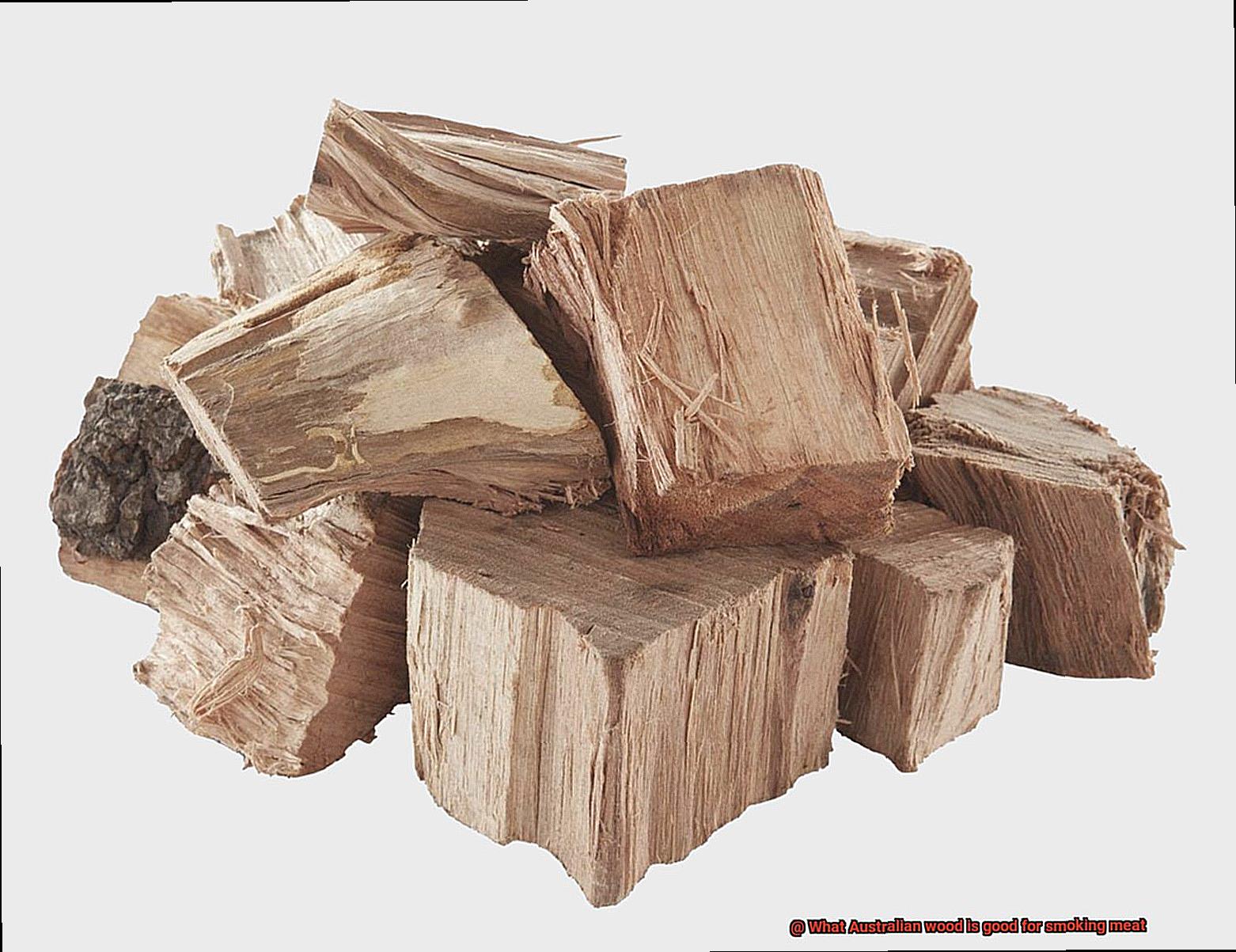
Smoking meat can be an art form, with each type of meat requiring a different approach. Beef brisket, for example, requires a long smoke at low temperatures to achieve the perfect tenderness and flavor. Ribs may require a shorter smoke at higher temperatures for a juicy and flavorful result.
Types of Wood for Smoking Meat
it’s an art that requires the perfect blend of flavors. The type of wood used for smoking is just as important as the cut of meat itself. In Australia, there are several types of wood that are commonly used for smoking meat. Let’s explore these woods and how they impact the flavor of your meats.
Hickory
Hickory is a popular wood for smoking meat in Australia. Its strong, smoky flavor pairs perfectly with beef, pork, and poultry. When smoked with hickory, the meat takes on a deep, rich flavor with a hint of sweetness. It’s perfect for creating mouth-watering ribs or pulled pork that will leave you craving more.
Mesquite
Mesquite is a type of wood commonly used in Texas-style BBQ. It has a rich, earthy flavor that complements beef, pork, and lamb. When smoked with mesquite, meats take on a bold flavor that can be slightly bitter if overused. It’s perfect for grilling steaks or chops that will leave you feeling satisfied.
Apple
Apple wood is a mild, sweet wood that adds a fruity flavor to meats. It’s great for smoking chicken, turkey, and pork. When smoked with applewood, the meat takes on a subtle sweetness that isn’t overpowering. It’s perfect for creating succulent pulled pork or smoked turkey that will make your taste buds dance.
Cherry
Cherry wood has a sweet, fruity flavor that pairs well with pork and poultry. It also gives meat a beautiful reddish color. When smoked with cherrywood, the meat takes on a slightly sweet flavor that isn’t too overpowering. It’s great for creating juicy smoked ham or pork tenderloin that will have your guests asking for seconds.
Oak
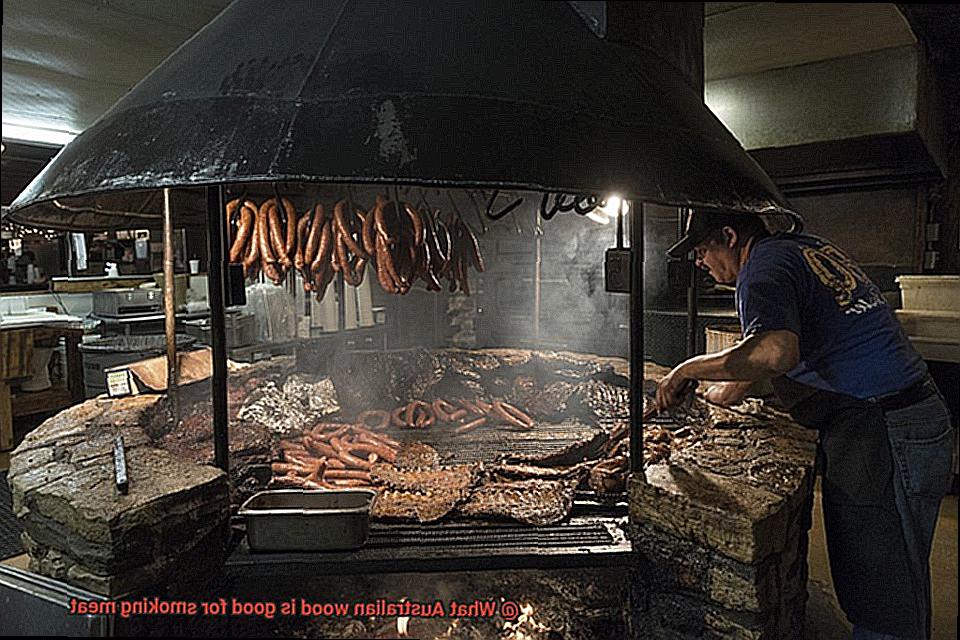
Oak is a versatile wood that can be used for smoking all types of meat. Its strong, smoky flavor pairs well with beef and pork. When smoked with oakwood, the meat takes on a bold and smoky flavor that isn’t too overpowering. It’s perfect for creating mouth-watering brisket or smoked beef ribs that will have you licking your fingers clean.
Pecan
Pecan wood has a nutty, sweet flavor that pairs well with pork and poultry. It’s also great for smoking brisket and ribs. When smoked with pecanwood, the meat takes on a slightly sweet and nutty flavor that isn’t too overpowering. It’s perfect for creating tender pulled pork or smoked chicken that will melt in your mouth.
It’s important to note that the type of wood used for smoking meat can greatly impact the taste of the final product. For example, stronger woods like hickory or mesquite are better suited for red meats, while lighter woods like apple or cherry are better for poultry or fish.
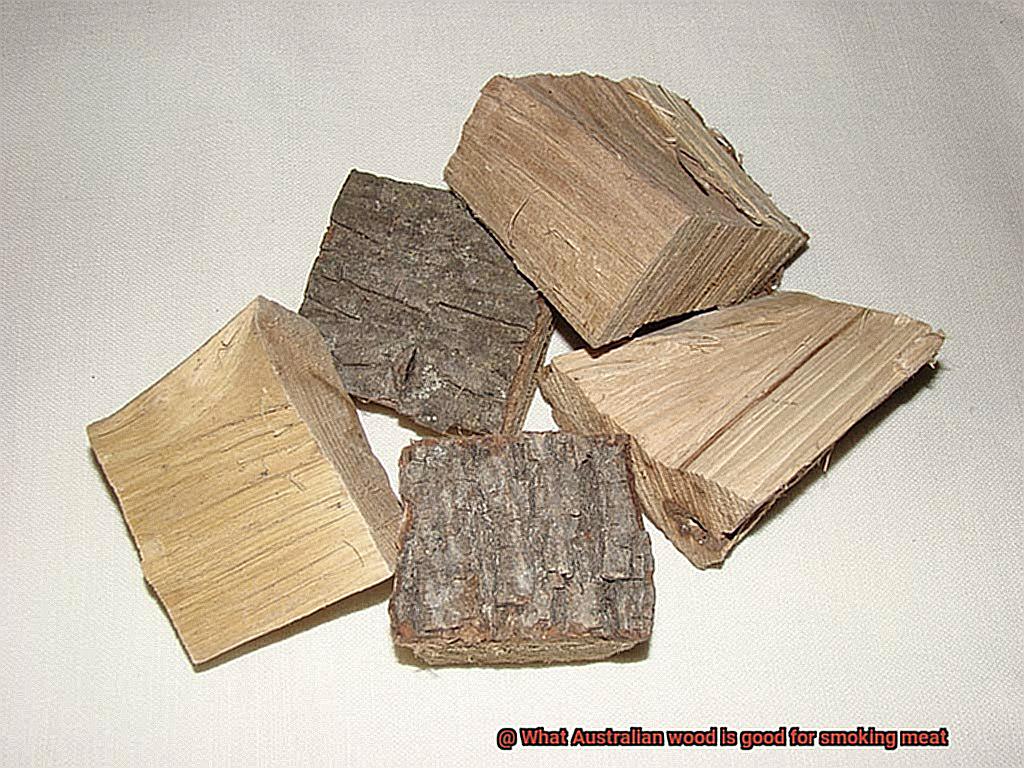
Ironbark: The Sweet Flavor of Australia
And if you want to add a touch of Australian sweetness to your meat, look no further than Ironbark.
Ironbark comes from the eucalyptus tree, which is native to Australia. Its dense and heavy nature makes it ideal for producing long-lasting smoke that imparts a sweet and smoky flavor to meat. Unlike other woods, Ironbark burns slowly and steadily, ensuring that your meat is infused with flavor without being overpowered.
What’s more, there are different varieties of Ironbark wood to choose from, each with its own unique flavor profile. Red Ironbark boasts a strong and robust flavor that adds depth to any dish, while Grey Ironbark has a milder taste that pairs perfectly with poultry or fish. With several options available, you can experiment with different flavors until you find your perfect match.
But Ironbark’s appeal doesn’t stop at its sweet flavor. It’s also incredibly durable, able to burn for hours on end without needing to be replenished. Its minimal ash production makes it easy to maintain temperature control and keep the fire going for longer periods, making it perfect for slow-cooking meat.
Hickory: Smoky and Complex Flavors
If you’re a meat connoisseur, then you know that the perfect smoky and complex flavors can make all the difference in a dish. While hickory may be the go-to wood for smoking meat, Australia has its own native woods that can provide similar flavor profiles. In this article, we will delve into the world of Australian woods that can elevate your smoking game and tantalize your taste buds.
First up on our list is the Australian Blackwood. This wood is commonly found in the eastern parts of Australia and has a sweet and mild flavor that’s perfect for smoking poultry, pork, and fish. Blackwood burns slowly and evenly, producing a consistent amount of smoke to ensure that your meat is infused with just the right amount of smoky flavor. Its mellow taste profile makes it an excellent choice for those who prefer a subtle smoky flavor.
Next in line is the Ironbark. This dense and heavy wood is ideal for low and slow cooking, producing a strong, smoky flavor that works wonders with beef and lamb. Ironbark burns slowly and evenly, allowing for a long smoking process without needing constant re-fueling. Its robust flavor makes it an excellent choice for those seeking an intense smoky flavor.
Finally, there’s the Apple Box tree with its fruity and sweet flavor profile that’s perfect for smoking pork or chicken. It burns hot and fast, making it best used in combination with other woods to ensure a consistent temperature. The Apple Box tree provides a unique flavor profile that will add a touch of sweetness to your dishes.
Applewood: Mild and Fruity Smoke
Look no further than the versatile and delicious applewood. This popular wood choice is renowned for its mild and fruity smoke flavor, making it an excellent option for Australian barbecue enthusiasts.
One of the many benefits of applewood is its availability in Australia, meaning you don’t have to go through the hassle of importing it from abroad. Once you have it, you’re in for a real treat. Applewood boasts a sweet aroma and delicate flavor that’s sure to impress.
To ensure optimal results, it’s crucial to use dry, seasoned applewood when smoking meat. Wet or green wood will produce a bitter taste that can taint the flavor of your dish. However, with properly prepared applewood, you can create an utterly delectable meal.
Applewood is particularly well-suited for smoking poultry, pork, and fish. The mild smoke flavor complements the natural sweetness of these meats without overwhelming them. Plus, applewood smoke creates a gorgeous golden-brown hue on the surface of your meat, making it look just as appetizing as it tastes.
When using applewood for smoking, start with a small amount and gradually increase until you reach the desired flavor. Too much smoke can overpower your dish, so it’s important not to overdo it. As always, keep an eye on your fire and temperature to ensure even cooking and prevent burning.
Mesquite: Aromatic and Bold Taste
As an Australian grill master, you know that the secret to a perfectly cooked meat lies in the wood you use for smoking. And when it comes to infusing your meats with a bold, aromatic flavor, mesquite is the wood of choice.
What makes mesquite stand out from the rest? Firstly, its high heat output is perfect for grilling and smoking meats. Mesquite burns hot and fast, creating a smoky flavor that is sure to impress your guests. Its unique flavor profile can range from subtle to strong, depending on how much you use, giving you complete control over the taste of your dish.
But it’s important to remember that mesquite is not a one-size-fits-all solution. Its bold taste can overpower lighter meats like chicken and fish, which is why it’s best used sparingly and in conjunction with other woods to balance out the flavor.
Aside from its impressive taste, mesquite also offers several health benefits. It is naturally low in fat and calories, making it a healthier alternative to other woods like hickory or oak. Additionally, mesquite wood contains antioxidants that can help improve overall health and reduce the risk of certain diseases.
Cherrywood: Subtle Sweetness with a Bite
Look no further than cherrywood, the secret ingredient that adds subtle sweetness with a bite to your dishes. As a smoking meat expert, I highly recommend cherrywood for its unique flavor profile and impressive burning qualities.
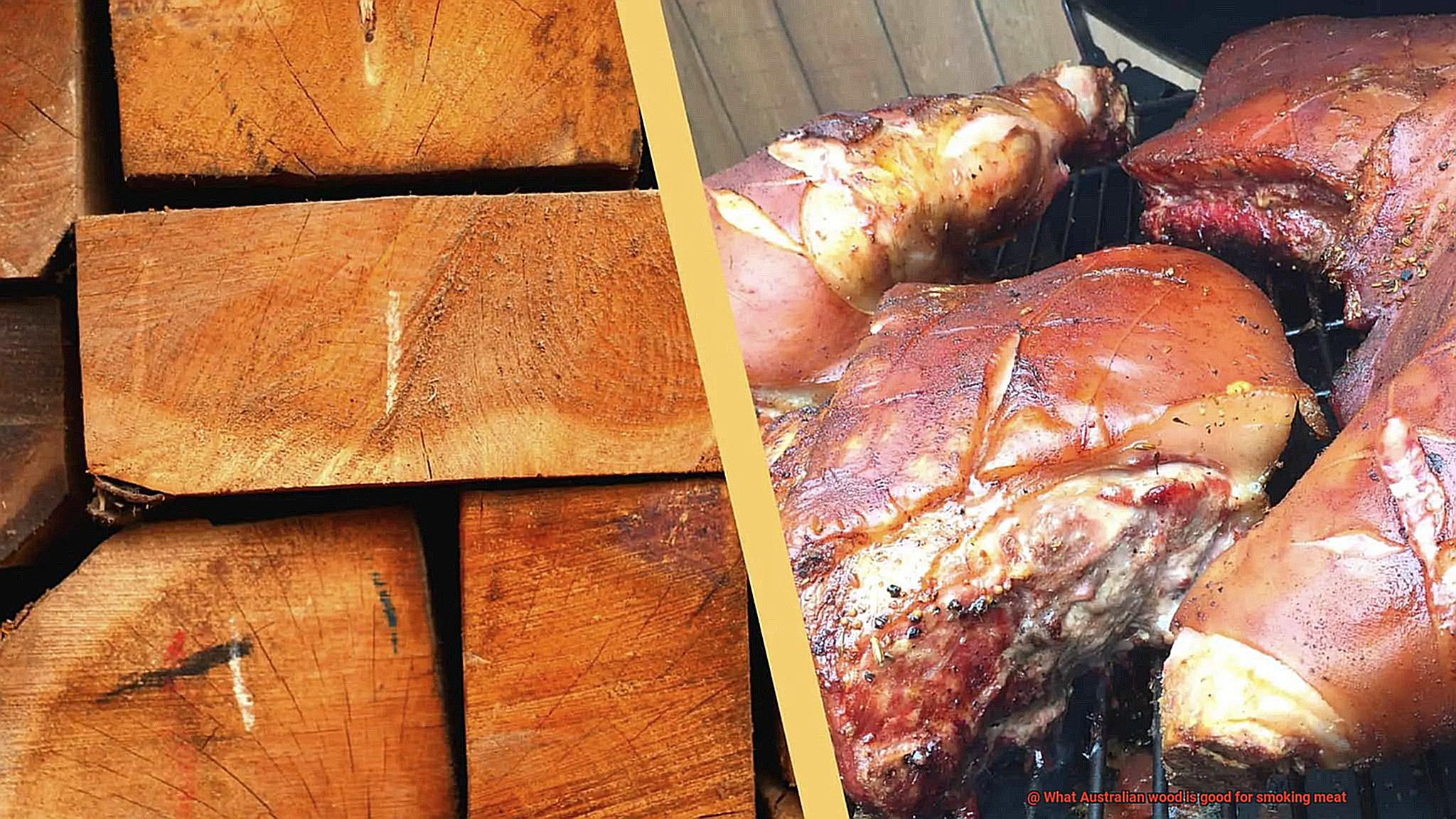
Cherrywood, a hardwood native to Australia, is known for its rich, reddish-brown color and durability. It burns cleanly and evenly, ensuring that your meat is cooked uniformly without any hot or cold spots. But what really sets cherrywood apart is its flavor. Its subtle sweetness pairs perfectly with pork, chicken, and beef, while its bite adds depth and complexity to the flavor profile.
But that’s not all – cherrywood also produces a beautiful smoke that adds both flavor and aroma to your meat. The light, fruity aroma is unmistakable and adds an extra layer of complexity to the taste. And let’s be honest, the sight of cherrywood smoke billowing out of your smoker is a sight to behold.
To get the most out of cherrywood, it’s important to choose high-quality wood that has been properly seasoned and stored. This will ensure that the wood burns cleanly and produces the best possible flavor for your meat.
Red Gum: Rich and Robust Flavor Profile
This popular Australian hardwood, sourced from the Eucalyptus camaldulensis tree, boasts a slow-burning rate and high density. These properties make it ideal for smoking meat over an extended period of time without the need to constantly add more wood. Plus, its reddish-brown color and durability make it a visually appealing option for smoking enthusiasts.
But what sets Red Gum apart is its intense flavor profile. It pairs exceptionally well with meats like beef, lamb, and pork, providing depth and complexity to the dish. However, it’s crucial to use this wood in moderation as it can easily overpower the flavor of the meat if too much is used. To balance out the flavor profile, consider combining Red Gum with other woods like fruitwoods or hickory.
Red Gum has been a staple in Australian barbecue culture for centuries, and for good reason. Its distinct flavor profile and slow-burning properties make it a reliable and flavorful option for smoking all kinds of meats. Whether you’re a seasoned barbecue enthusiast or just starting out, Red Gum is a wood you won’t want to miss.
He-Nw5-LMrE” >
Conclusion
In conclusion, smoking meat with Australian wood is a culinary tradition that has stood the test of time. It’s a technique that infuses your dish with a unique and unforgettable flavor that you won’t get from any other cooking method. When it comes to smoking meat, the type of wood you use is just as important as the cut of meat itself.
Thankfully, Australia has no shortage of excellent woods to choose from for smoking. Hickory, Mesquite, Applewood, Cherrywood, Ironbark, Blackwood, and Red Gum are all popular options with their own distinct flavors that pair well with different meats.
However, it’s crucial to select high-quality and properly seasoned wood to avoid producing bitter flavors and unpleasant smoke. You don’t want your guests to be left with anything but a delicious taste in their mouths.
It’s also important to consider the length of time you’ll be smoking your meat and adjust the amount of wood accordingly. Over-smoking can ruin even the best cuts of meat.
Smoking meat is an art form that requires patience, practice, and experimentation. Different meats require different approaches when it comes to smoking them. But by using the right type of wood and taking a methodical approach, you can achieve mouth-watering results that will leave your guests asking for seconds.

